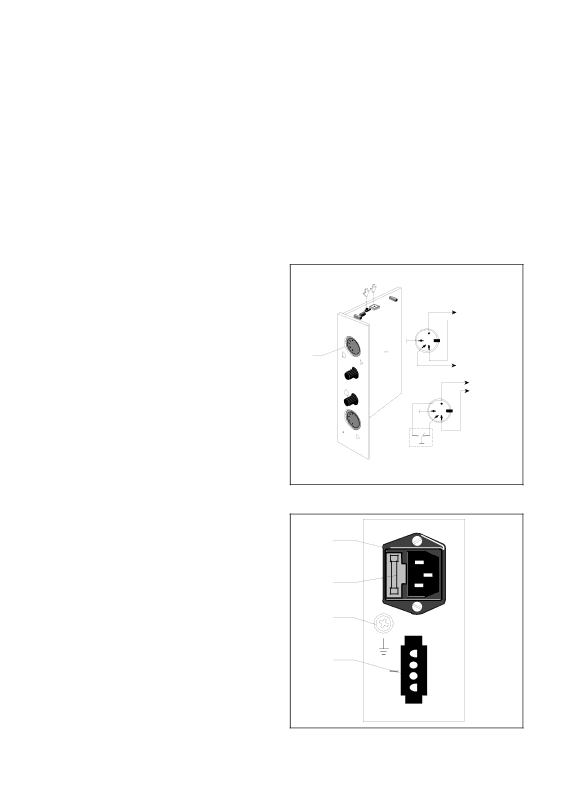
4.2 SM30 basic modules
On delivery the rear panel of the SM30 Control Centre (fig.5.1) contains the Line Output Module and the Power Supply Module, as well as the removable blank module panels. (The last only in LBB 1280/30). Both modules are essential components, without which the SM30 system will not function.
Line Output Module
As its name implies, the Line Output Module terminates line level audio signals for the ‘Call’ output (fig.4.2D) and ‘Music’
remove the mains power cable (cord) from the socket, and carefully insert a medium sized screwdriver under the small lip of the fuse cover (nearest the socket pins), and gently twist the screwdriver to lever the fuse holder out. A
An Earth terminal (fig.4.3C) is mounted on the Power Supply Module to allow an extra earth (ground) wire to be connected for use with the Emergency Power Supply, or when the mains power earth is inadequate.
output (fig.4.2A).
These feed the inputs of their respective amplifiers. Both signals are terminated on 5- pole 180° DIN sockets, see fig.4.2 for wiring details. For amplifier surveillance purposes, it is possible to activate the
The module is fitted on the frontpanel with two potentiometers; Alarm Volume Control (fig.4.2C) and Attention Tone Volume Control (fig.4.2B).
E F
D
C![]()
![]()
![]()
B ![]()
![]()
A![]()
![]()
![]()
symmetric ![]() Call Out
Call Out
4![]()
![]() 1
1
2
5 3
Test signal 20 kHz
symmetric Music out
4![]()
![]() 1
1
2
5 3
SM30 relay not active during Call.
These allow the installer to set the output volume of the internal signal generator to the desired level for each of the two types of signal tone.
The output volume level of the Call signal has no preset (setting is done on both the Microphone Input Module and the Call Station Input Module).
Power Supply Module
This module contains the terminations for both the mains power and emergency +48 VDC supply. The mains power socket (fig.4.3A) is of the standard “Europlug” type, and has a mains fuse holder built in. To remove the mains fuse (fig.4.3B), first
Fig. 4.2
A
B
C
D
+48
Fig. 4.3
10